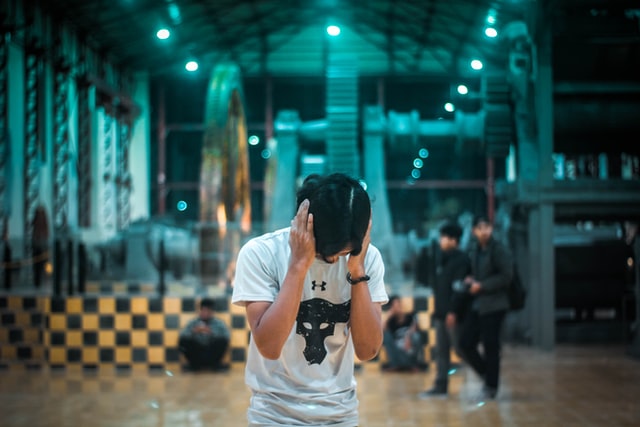Population Density and Noise Pollution in Environment
There are a number of ways by which people are affected tremendously by population density and noise. When people disregard other people’s privacy, personal space and territory with long-lasting noise, it may have an effect in a variety of ways ranging from mere frustration to harsh interfering depression-causing infirmities (Straub, 2007). With the increase in population, personal space, privacy and territorial confidentiality of people are encroached. This may require demand recognition of housings for the prevention of the psychosomatic consequences of population mass. Such circumstances also necessitate the prevention of hostility, fretfulness, and annoyance. In order to understand the effects of population mass and noise on the individual, it is exceedingly important to first understand the three concepts of personal space, privacy and territoriality, privacy, and personal space.
Privacy, Personal Space and Territoriality
As far as the notion of privacy is concerned, it is a right of every individual. According to Columbia Encyclopedia, the right of privacy is “the right to be left alone without unwarranted intrusion by government, media, or other institutions or individuals” (“privacy, right of,” 2013). Privacy includes various things. It includes having power over facts about oneself and controlling one’s interactions and communication with other people (Hutchinson & Kowalski, 1999). In today’s contemporary world, the introduction and usage of new technologies have raised concerns regarding the management and organization of information about other people.
When personal space is discussed, it simply means an unwritten and noncontact medium of communication that is held, preserved and updated by every person who reacts in case of the violation of this space by other person. It can be said that in order to maintain one’s privacy, a person uses personal space and territoriality as two significant methods.
According to various researches of neuroscience, it is the human brain that principally creates and mediates the personal space. While circumstances cause shifts in boundaries, personal space is of immense importance and consequence to everyone (Kennedy, Gläscher, Tyszka, & Adolphs, 2009).
Third Concept
The third concept that needs to be understood is that of territoriality which means the “actions or behaviors that often emanate from psychological ownership for the purposes of constructing, communicating, maintaining, and restoring one’s attachment to an object” (Brown, Lawrence & Robinson, 2005). It includes strong precautionary and imprudent behaviors for a short term covering observations and opinions, employment and protection of places, community, things, and thoughts. Territoriality is equipped to gratify certain major and minor situations important for people and society.
Particular behaviors of people help them in keeping space. Such specific behaviors in human beings make them strong enough to use their capacities for attacking and displaying violence and maintaining other characteristic reactions when their personal space and privacy is disturbed. According to recent researches in this area, scientists have given great emphasis on the presence of natural variables that play a major part in the determination of territorialism. It is important to mention here that with the limitation of the availability of critical resources, personal space and belongings are guarded by people with more heartiness and dynamism.
Concept of Privacy and Personal Space
Thus, the concepts of privacy, personal space and territoriality have turned out as increasingly important factors with the density of populations with the passage of time. Population density makes people to feel limited and restricted as necessities of life are not available in abundance. Population masses serve as a major factor in the development of aggressive behaviors, social abandonment, greater incidents of criminality and improper social dealings.
Therefore, if the symptoms of crowding are to be decreased, it is exceedingly important to take necessary steps for the preservation of privacy and personal space. Not only this, it is also the need to recognize and respect territoriality as an essential collective need of the Homo sapiens. With the decrease of physical space, more acknowledgment shall be given to privacy and personal space so that the psychological effects can be prevented. This is because the absence of privacy and personal space makes people less powerful, more competitive and negative even in tolerable circumstances. In case of the availability of ample space, it has been observed that people feel stronger and have power over their surroundings making them anxiety-free and relaxed.
Impact on Natural Environment
People who live in urban areas are affected by natural environment in several ways. When natural settings managed by human beings are considered, parks, green areas and zoos prop up in mind instantly. These managed settings are a great source for creating support and collective environment for people so that they may interact with the natural world. This kind of interaction not only makes contact with the natural surroundings possible but also it provides a basis for the environmental identity to foster. This is extremely advantageous as environmental identity is almost always gets withdrawn in metropolitan areas.
The existence of parks and zoos in the urban living settings are a motivational factor for people inspiring them to participate in the management and preservation of nature. People are influenced by the natural environment as a consequence for the reason that the natural settings result in the reduction of diseases, health promotion, community health support and minimization of criminal activities. These theories are consistently proved by the modern-day evidence. Parks in urban settings play a major role in the maximization of physical commotions and people have minimal health issues. It is also a verified fact that people whose places are near greener areas had lesser death rates. In addition, green space reduces the noise stress in cosmopolitan areas. Greener localities affect the behavioral patterns of people as well by endorsing fewer levels of aggression and violence due to close communication among people. Not only this, such green setting also result in excellent academic achievements and more positive public relations bringing the community members closer to each other.
Noise Effect and its treatment
Individuals are also affected by noise in a number of negative ways. According to the research done in health psychology, it has been revealed that recurrent noisy settings affect the health of people in a damaging manner. This is because noise makes people stressed. Cardiovascular diseases also develop and learning abilities are also hampered due to noise as people are distracted with continuous clamor and clatter in their surroundings.
Noise especially affects children and effects them by disrupting their maladaptive skills by which they are able to block particular stimuli. This results in various problems as children are not capable of completely understanding how they should respond to specific stimuli. Thus, noise makes it impossible for children to identify the stimuli that may help them in learning experience. By blocking noise, it also becomes impossible for children to develop their verbal skills as blockage may also block verbal elements. Loud noises can also disturb the short-term memory and the ability to carry out simple tasks is also reduced. Every person has a different ability to assess and judge noise. It is also important to note here that stress is not directly caused by noise. However, noise has severe effects on the sleeping patterns of people and is also responsible for provoking anxiety.
It is a good thing, that by composing various strategies, noise can be reduced. Noise can be mediated through placement of fabric. The noises that come from outside the house and cannot be controlled. This can be reduced by the fixing of extra fabrics on windows. It can also be installed on walls and other furnished materials. Glass allows noise to travel inside so it is better to cover windows with fabric layers. Noise can also be reduced through auditory masking. Cheap sound masking machines can be bought and installed easily.
Mental Health Issues
Noise pollution is a hot issue in the contemporary world especially in the urban areas as it has imposed significant threats for the mental and physical health of human beings. This is the reason why it is necessary to combat against it at various levels. Firstly, it is the responsibility of the administrative authorities to reduce noise by employing legislative measures against noise pollution. Secondly, employment of active measures is also indispensable for reducing the number of sources that generate noise or by reducing the intensity of the generated noise. Last but not the least, passive measures are also essential for the attenuation of noise by reducing the level of noise intensity on its way of propagation to receptor.
Conclusion
To cut a long story short, population density, noise and space are various environmental factors by which people are affected easily. However, if people are well-prepared to fight against the negative effects of the mentioned environmental elements, the stress in life can be minimized. It is a great thing that there have been consistent progressions in the cause of combating with noise pollution. The public awareness has been tremendous as people are acquainted with the various biological and psychological harms of noise. Ordinances are being passed in more and more cities and their enforcement is made certain. It is exceedingly important as the society can only advance if honest and determined actions are guaranteed to make a difference. It is not an untold secret that the power of people can surely initiate an environment where health and fitness of people may nurture.
References
Brown, G., Lawrence, T. B., & Robinson, S. L. (2005). Territoriality in Organizations. Academy of Management Review, 30(3), 577-594.
Clayton, S. & Myers, G. (2009). Conservation Psychology. Hoboken, NJ: Wiley-Blackwell.
Hutchison, E. D., & Kowalski, S. (1999). Dimensions of Human Behavior: Person and Environment. Thousand Oaks, CA: Pine Forge Press.
Kennedy, D. P., Gläscher, J., Tyszka, J. M., & Adolphs, R. (2009). Personal Space Regulation by the Human Amygdala. Nature Neuroscience, 12(10), 1226-1227. doi: 10.1038/nn.2381
privacy, right of from The Columbia Encyclopedia, 6th ed.. (2013). Questia. Retrieved August 25, 2013, from http://www.questia.com/read/1E1-privacy/privacy-right-of
Straub, R. O. (2007). Health Psychology (2nd ed.). New York, NY: Worth.

